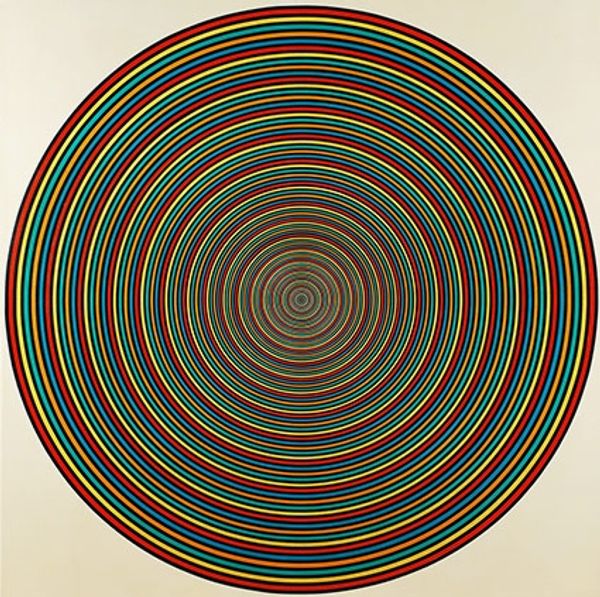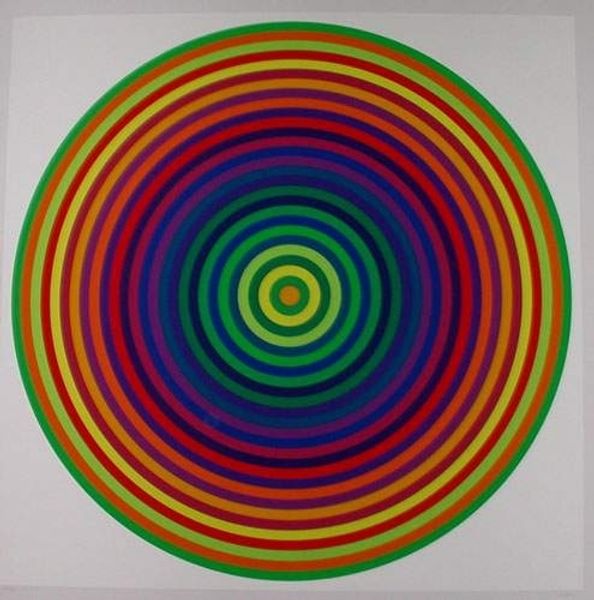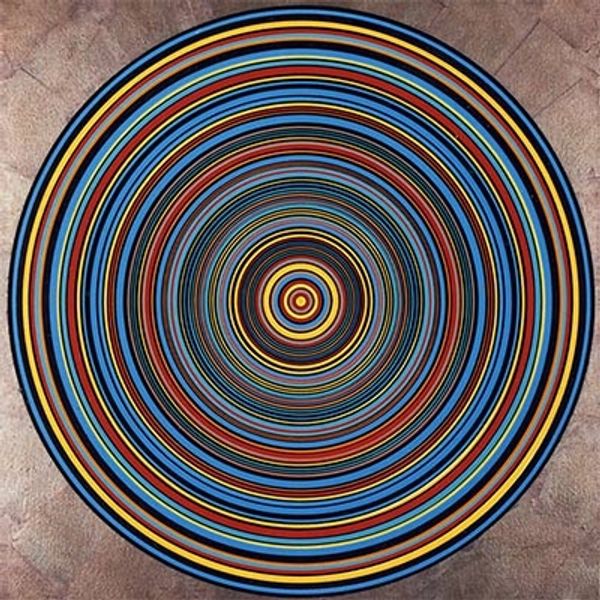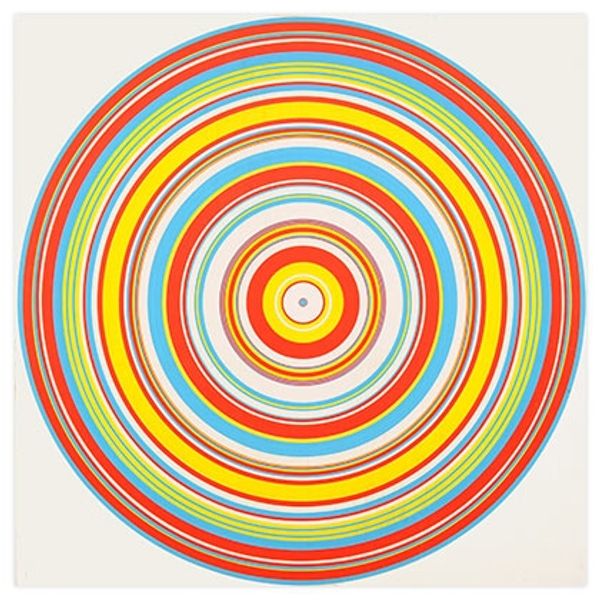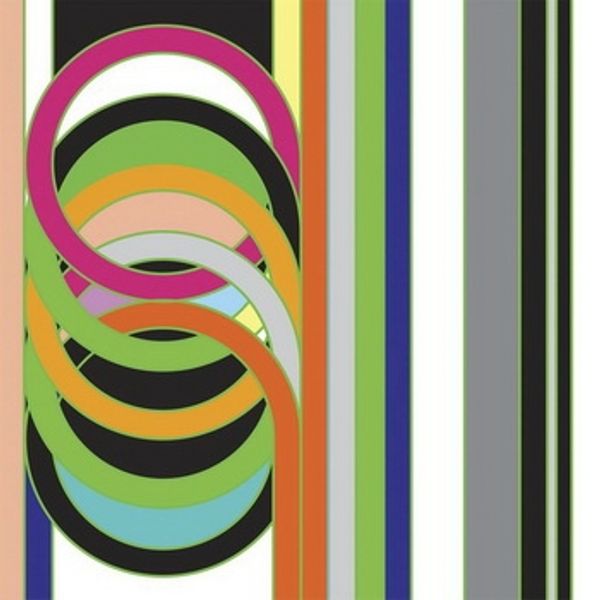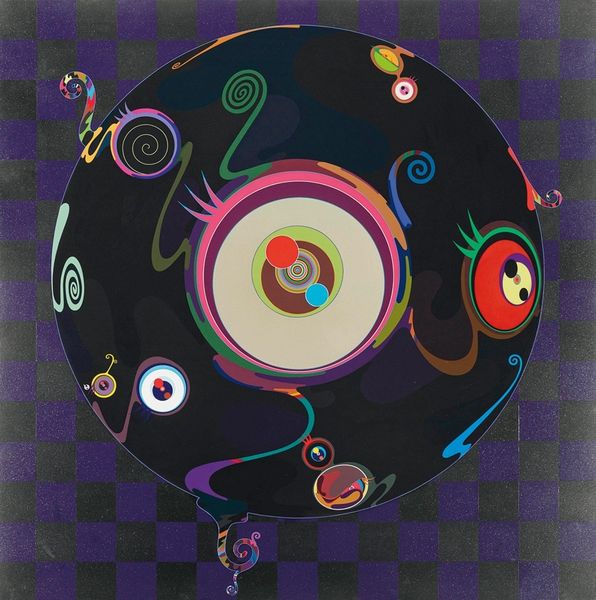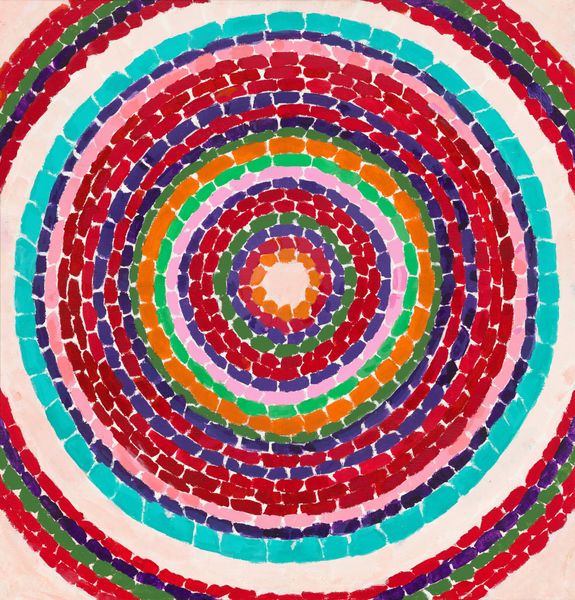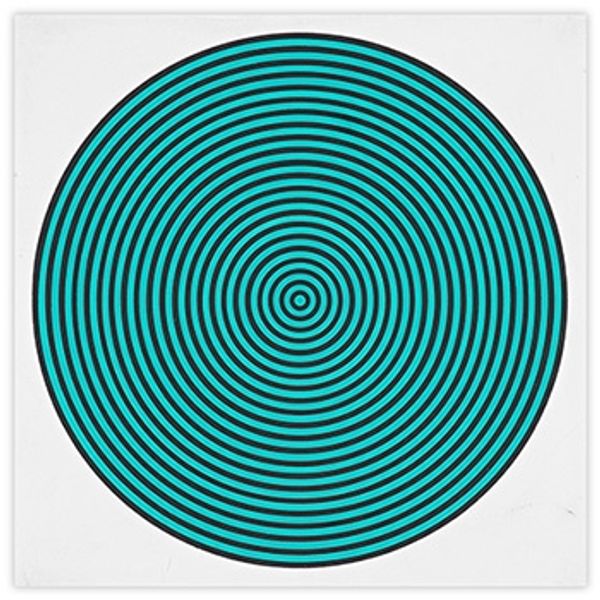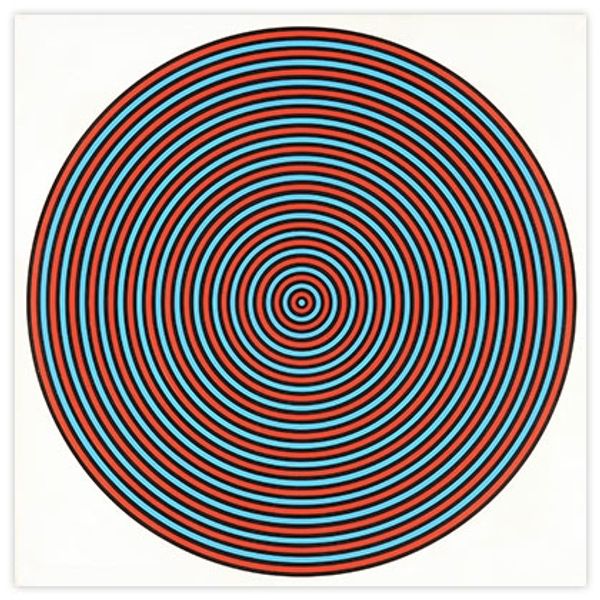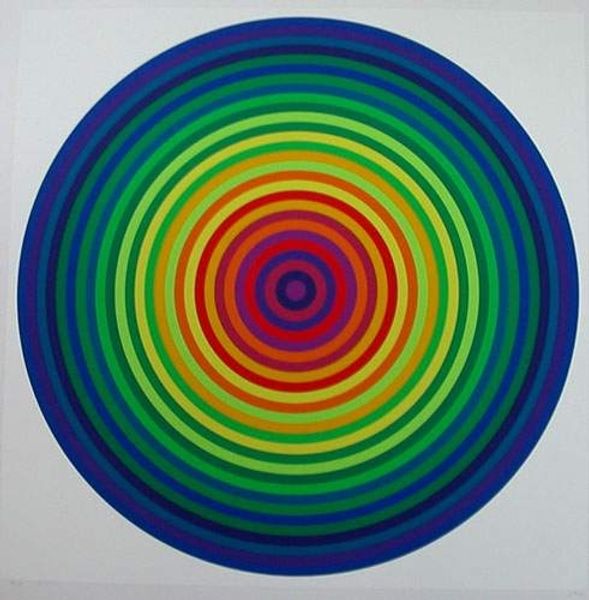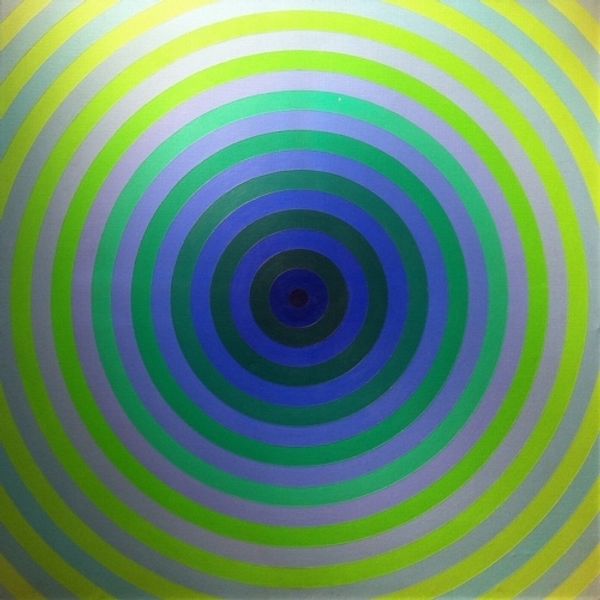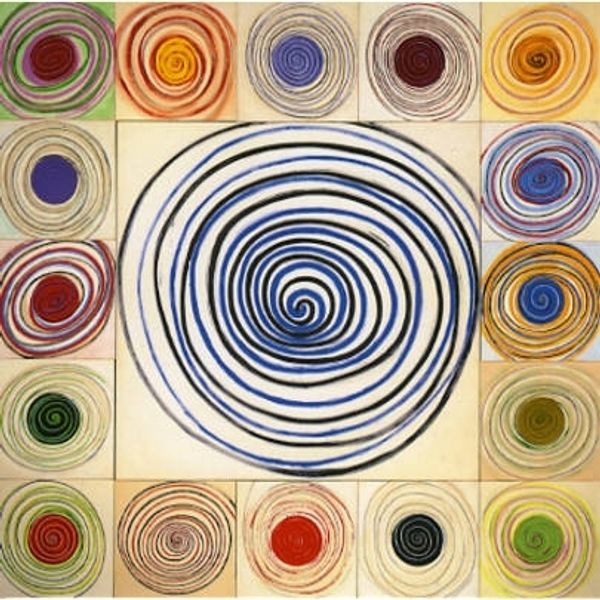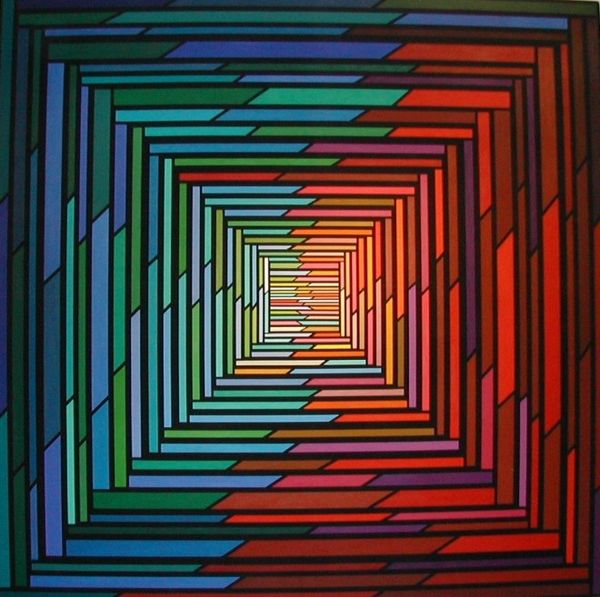
acrylic-paint
#
op-art
#
circle
#
pattern
#
acrylic-paint
#
geometric pattern
#
abstract pattern
#
organic pattern
#
geometric
#
repetition of pattern
#
abstraction
Copyright: Tadasky,Fair Use
Curator: Here we have Tadasky's "D 112," created in 1965. It's an acrylic painting that exemplifies the Op Art movement. Editor: My initial reaction is… hypnotic. All those concentric circles of vibrant color—blue, red, yellow, black—pull you right into the center. There’s an almost dizzying effect. Curator: Tadasky, a Japanese-American artist, came to prominence in the 1960s, a time of intense experimentation. Op Art, with its roots in geometric abstraction, emerged as a powerful way to engage with perception. Consider how artists used optical illusions to challenge conventional viewing practices. Editor: Absolutely, and the execution here is so precise. The way the artist modulates the colors and widths of the rings, it's less about depicting something, and more about pure sensation. There is something mechanistic but still fascinating. Curator: Indeed. It reflects the socio-political atmosphere as well; post-war society grappling with technological advancements and anxieties. The hard-edged abstraction mirrored an increasingly complex world and perhaps served as a means of control in this ever-changing scene. Editor: Interesting point. For me, though, the painting’s strength is its commitment to formal values. Color, shape, repetition, all meticulously arranged. You could consider that it relates to certain Minimalist aesthetics—reduction to essential components—although this goes in a more overtly psychedelic direction. Curator: Well said. I find that its accessibility also marks the beginning of a democratizing moment in the history of art in this time; it doesn’t require complex training to visually grasp, even if we, as historians, like to dive into socio-political undertones. Editor: Yes, art for the masses—literally mesmerizing them! Ultimately, it showcases the power of abstraction to affect us on a purely visual level, with that optical illusion! Curator: In this regard, this piece highlights not just artistic talent, but the period’s hopes for a more involved viewing population that reconsiders its perspective. Editor: Definitely a captivating work; a reminder of how art can be both intellectually stimulating and viscerally engaging.
Comments
No comments
Be the first to comment and join the conversation on the ultimate creative platform.
